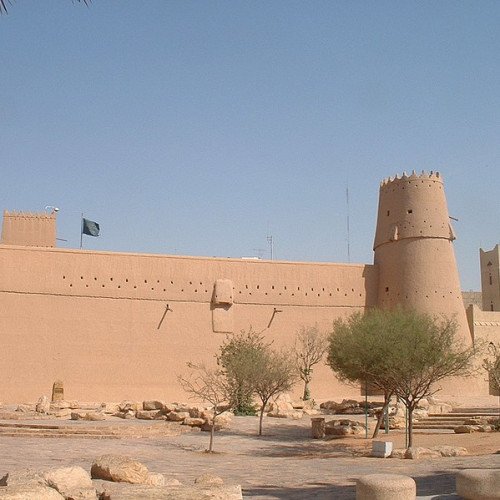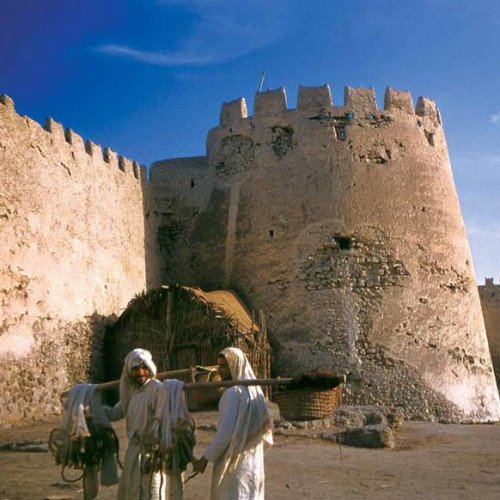Castles of "Saudi Arabia" MASMAK FORT vs QAL'AT AL-QATIF

MASMAK FORT
The Masmak Fort (Arabic: قصر المصمك, romanized: Qaṣr al-Maṣmak), also called the Masmak Fortress or Masmak Palace, is a clay and mudbrick fort in the old city of Riyadh, situated in the modern-day Deira district. Built in 1865 by 'Abdurrahman ibn Sulaiman under the Emirate of Jabal Shammar, The fortress played an integral role in the Unification of Saudi Arabia, with the Battle of Riyadh, one of the most important conflicts of the Saudi unification, taking place in the fort. Since 1995, the fortress has been converted into a museum showcasing one of the most important landmarks of Saudi heritage. The fort was built in 1865 by Emir of Riyadh, 'Abdurrahman ibn Sulaiman under the reign of Mohammed al-Rasheed, the ruler of the Emirate of Jabal Shammar and head of the House of Rasheed, who had wrested control of the city from the local House of Saud, who later went into exile. It was built with four watchtowers and thick walls, with a foundation of stone blocks, lying in the center of Riyadh, in the old city, part of the modern Deira district. It is one of the only historic buildings that has survived in the kingdom. The building was situated in the commercial center of historic Riyadh. In January 1902, Emir 'Abdulaziz ibn Saud Al Saud, who was at the time living in exile in Kuwait, returned to Riyadh and led an ambush against the Masmak fortress, regaining it from the House of Rasheed in the Battle of Riyadh. The event, which restored Saudi control over Riyadh, is considered one of the most important in the completion of the Unification of Saudi Arabia. It was used as a munitions warehouse from 1902 to 1938 by King Abdulaziz before he moved his court to then newly built Murabba Palace.
Statistics for this Xoptio

QAL'AT AL-QATIF
Qal'at al-Qatif (Arabic: قلعة القطيف) or Qatif Castle was a historic castle in the city of Qatif, Saudi Arabia. Initial construction of the castle dates back to the third century by the Sassanids. It was then refurbished by the Ottomans and utilized as a defensive military base for the Persian Gulf region. Later, the castle was turned into a civilian-purpose warehouse for the locals. The castle itself was a massive complex of densely populated area and several facilities, including eleven mosques, a keep for the king, keeps for the guests, which are surrounded by the citadel wall. It was oval-shaped, and John Gordon Lorimer estimated that the longest side reaches 365 meters from the east to west, and it reaches 275 meters from the north to south. At its peak, it contained the population of 5,000, and 300 shops. It also equipped moat and farmlands for orchard, connected to nearby Qatif oasis. The castle was destroyed in the 1980s, after the ownership was taken away from the locals, and the buildings and houses were gradually removed. Today, there are only 18 houses left in the field with the rest of the places turned into a public square and parking lots.